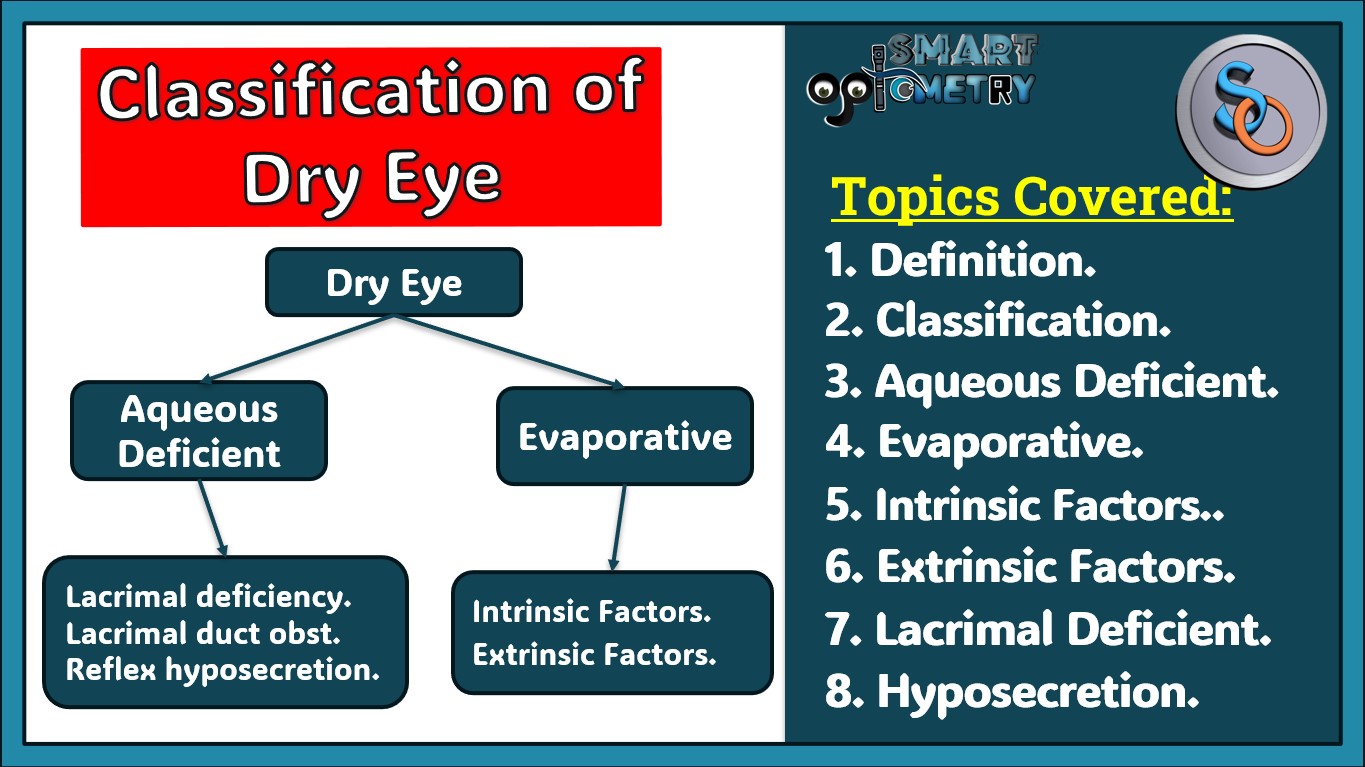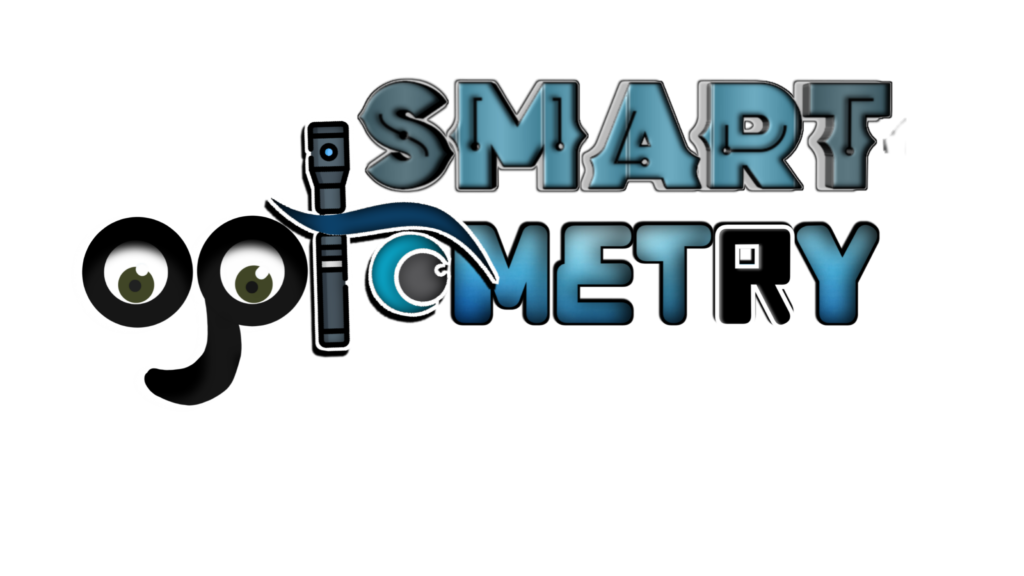Dry Eye:
Dry eye is a condition characterized by insufficient lubrication and moisture on the eye’s surface, due to either reduced tear production or increased tear evaporation. This leads to symptoms such as irritation, redness, discomfort, and visual disturbances.
Classification of Dry Eye:
- Dry can be classified into 2 broad categories:
- A. Aqueous Deficient Dry Eye.
- B. Evaporative Dry Eye.
A. Aqueous-deficient Classification of Dry Eye:
- Aqueous Deficient Dry Eye occurs when the lacrimal glands fail to produce enough aqueous layer to maintain a healthy tear film, resulting in inadequate eye lubrication.
- This deficiency can be due to various factors, including autoimmune diseases like Sjögren’s syndrome, which directly affect the glands’ ability to function properly.
- It may occur due to:
i. Lacrimal deficiency:
- Lacrimal deficiency dry eye, a subtype of aqueous deficient dry eye, occurs when the lacrimal glands produce insufficient tears to maintain a healthy eye surface.
- This deficiency leads to inadequate hydration and lubrication, resulting in discomfort, irritation, and potential damage to the ocular surface.
a. Primary lacrimal deficiency:
- Age-related dry eye,
- Congenital alacrima.
b. Secondary lacrimal deficiency:
- AIDS,
- Lacrimal gland
- Nerve ablation.
ii. Lacrimal gland duct obstruction:
- Lacrimal gland duct obstruction dry eye arises when blockages in the ducts of the lacrimal gland prevent tears from reaching the eye’s surface.
- It may occur due to:
- Trachoma.
- Chemical injury.
- Stevens Johnson syndrome.
iii. Reflex hyposecretion:
- Reflex hyposecretion dry eye occurs when there is a diminished tear production in response to sensory or neural stimuli due to dysfunction or damage to the reflex arcs involved in tear secretion.
- It may occur due to:
a. Sensory Causes:
- Contact lens wear,
- Diabetes,
- Refractive surgery.
b. Motor Causes:
- Seventh cranial nerve damage,
- Systemic drugs.
B. Evaporative Classification of Dry Eye:
- Evaporative Dry Eye is the most common form of dry eye, resulting primarily from excessive tear evaporation.
- This condition often stems from meibomian gland dysfunction (MGD), where the glands don’t secrete enough oil (meibum) or the quality of meibum is poor, leading to rapid tear evaporation and dry eye symptoms.
- Environmental factors, such as dry air and prolonged screen use, can also contribute to this condition.
- This may occur due to:
- 1. Intrinsic Factors.
- 2. Extrinsic Factors.
1. Intrinsic Factors:
- Intrinsic Factors Dry Eye refers to dry eye conditions caused by internal physiological factors, such as:
Meibomian gland deficiency:
- Posterior blepharitis.
Disorders of lid aperture,
- Excessive scleral show,
- Lid retraction,
- Proptosis,
- Facial nerve palsy
Low blink rate:
- Reading, Using mobile & computer.
Drug action:
- Antihistamines,
- Antispasmodics,
- Diuretics.
2. Extrinsic Factors:
- Extrinsic Factors Dry Eye results from external environmental or lifestyle influences, such as:
- Vitamin A deficiency.
- Topical drugs including the effect of preservatives.
- Contact lens wear.
- Ocular surface disease such as allergic conjunctivitis.
Causes of Dry Eye:
Age:
- Over age 65 years
Gender:
- Female is more than male due to:
- Pregnancy,
- Oral contraceptives
- Menopause.
Medications:
- Antihistamines,
- Anti-hypertensive
- Antidepressants
Medical conditions:
i. Ocular:
- Inflammation of the eyelids (blepharitis),
- Inflammation of the surfaces, The inward or outward turning of eyelids
ii. Others:
- Rheumatoid arthritis,
- Diabetes
- Thyroid problems
Environmental conditions:
i. Exposure to Smoke,
- Wind
- Dry climates
ii. Failure to blink regularly:
- Using screen for long periods of time
iii. Other factors:
- Long-term use of contact lenses,
- Refractive eye surgeries
Check Our Courses: Ophthalmic Instrumentation, Clinical Refraction, Contact Lens, Binocular Vision, Dispensing Optics, MCQs in Optometry
Download our App “Optometry Notes & MCQs” from Google Play Store.




